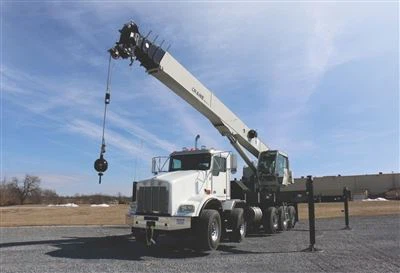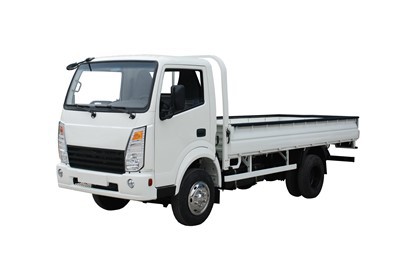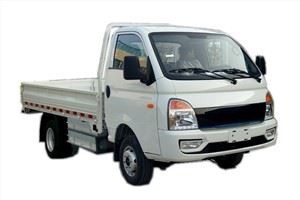Understanding Rubbish Collection Trucks: Essential Features and Benefits

In our modern world, waste management is crucial for maintaining healthy environments and communities. Rubbish collection trucks play a vital role in this process. This article will explore everything you need to know about rubbish collection trucks, covering their types, mechanisms, benefits, and maintenance tips.
1. What Are Rubbish Collection Trucks?
Rubbish collection trucks are specialized vehicles designed for collecting and transporting waste. They are essential tools for municipal waste management, ensuring that litter and refuse are efficiently gathered and removed from urban areas.
1.1 The History of Rubbish Collection Trucks
The concept of rubbish collection began in the 19th century when cities realized the need for organized waste disposal. Early models were horse-drawn carts, which evolved into the motorized garbage trucks we see today.
2. Types of Rubbish Collection Trucks
Rubbish collection trucks come in various forms, tailored to specific waste collection needs.
2.1 Front Loader Trucks
Front loader trucks are designed for commercial and industrial waste collection. These trucks have large bins fitted to the front, allowing for efficient loading and transportation.
2.2 Rear Loader Trucks
Rear loader trucks are most commonly seen in residential areas. They feature a compaction mechanism at the back, allowing garbage collectors to easily load waste using a chute.
2.3 Side Loader Trucks
Side loader trucks are equipped with robotic arms that allow for automated collection. This increases safety and decreases the time needed to complete rounds.
2.4 Vacuum Trucks
Vacuum trucks are designed for collecting liquid waste or sludge. They use suction to gather materials, making them ideal for specific waste management tasks.
3. Key Features of Rubbish Collection Trucks
Understanding the key features of rubbish collection trucks can help in choosing the right type for specific waste collection needs.
3.1 Compaction Mechanism
Most rubbish collection trucks are equipped with a compaction mechanism that compresses waste, maximizing storage capacity. This feature reduces the number of trips needed for disposal.
3.2 Load Capacity

The load capacity of rubbish collection trucks varies. Smaller trucks can hold around 10 cubic yards, while larger models can accommodate over 30 cubic yards.
3.3 Safety Features
Safety features, including 360-degree visibility, backup alarms, and stability control, are essential for protecting both the operators and the public.
3.3.1 Importance of Safety Features
Waste collection can be hazardous due to busy urban environments. Safety features help minimize risks and accidents.
4. Benefits of Using Rubbish Collection Trucks
Employing rubbish collection trucks brings numerous benefits to communities and organizations.
4.1 Efficient Waste Management
These trucks streamline waste collection, allowing municipalities to manage refuse effectively with fewer resources.
4.2 Environmental Protection
By facilitating timely waste removal, rubbish collection trucks help keep the environment clean and reduce pollution.
4.3 Enhanced Public Health
Regular waste collection prevents the accumulation of debris, reducing the risk of disease outbreaks caused by pests and unhygienic conditions.
5. The Role of Technology in Rubbish Collection Trucks
Technological advancements are revolutionizing rubbish collection trucks, making them smarter and more efficient.
5.1 Smart Routing
GPS and routing technology enable trucks to optimize their paths, minimizing fuel consumption and improving collection times.
5.2 Automated Collection Systems
Automated arms on side loader trucks reduce the need for manual labor, increasing efficiency and safety.
5.3 Data Management Systems
Advanced data management systems can track waste levels in bins, enabling more effective scheduling for collections.
6. Examples of Rubbish Collection Trucks in Action
Several municipalities and companies utilize rubbish collection trucks effectively. Here are some notable examples:
6.1 New York City
New York City uses a fleet of rear loader trucks for residential waste collection, ensuring that they maintain cleanliness in one of the world’s busiest cities.
6.2 San Francisco
San Francisco is known for its recycling efforts, utilizing side loader trucks equipped with bins to separate recyclable and non-recyclable waste.
6.3 Waste Management Inc.
This private waste management company employs various types of rubbish collection trucks across the United States to serve both residential and commercial clients.
7. Tips for Maintaining Rubbish Collection Trucks
Proper maintenance of rubbish collection trucks is essential to ensure they operate efficiently and safely.
7.1 Regular Inspections
Conduct regular inspections to check the tires, brakes, and the compaction system for any signs of wear and tear.

7.2 Oil Changes
Change the engine oil according to the manufacturer’s recommendations to ensure optimal performance and longevity.
7.3 Cleaning the Trucks
Regular cleaning helps to prevent rust and corrosion, especially in areas exposed to waste and moisture.
8. Challenges Faced in Rubbish Collection

While rubbish collection trucks are essential for waste management, there are several challenges that come with their operation.
8.1 Traffic Congestion
Urban areas often have heavy traffic, which can delay rubbish collection schedules and increase operational costs.
8.2 Safety Concerns
Safety is a significant concern for waste collection operators, as they work in busy environments with heavy machinery.
8.3 Budget Constraints
Many municipalities face budget constraints that limit the number of trucks they can operate, affecting the efficiency of waste management.
9. Legal Regulations Surrounding Rubbish Collection
Waste management is governed by various laws and regulations aimed at ensuring environmental safety and public health.
9.1 Local Ordinances
Each municipality may have its own set of ordinances that dictate rubbish collection schedules, fees, and disposal methods.
9.2 Environmental Regulations
Federal and state laws regulate how waste is handled, recycled, and disposed of to mitigate environmental impact.
10. Future Trends in Rubbish Collection Trucks
The future of rubbish collection trucks is likely to be shaped by ongoing technological advancements and shifts in waste management policies.
10.1 Electric and Hybrid Trucks
As sustainability becomes a priority, many waste management companies are investing in electric and hybrid rubbish collection trucks to reduce carbon emissions.
10.2 Increased Automation
Future rubbish collection trucks may feature more automation, allowing for improved efficiency and reduced labor costs.
FAQs
1. What is the average lifespan of a rubbish collection truck?
The average lifespan of a rubbish collection truck is typically around 10 to 15 years, depending on maintenance and usage.
2. How often are rubbish collection trucks used?
In residential areas, rubbish collection trucks usually operate once a week, while commercial areas may require more frequent pickups.
3. Can rubbish collection trucks handle hazardous waste?
Some rubbish collection trucks are specifically designed to handle hazardous waste, but most standard trucks should not collect these types of materials.
4. What type of fuel do rubbish collection trucks use?
Most rubbish collection trucks run on diesel fuel, although there’s a growing trend towards electric and hybrid models.
5. How are rubbish collection trucks maintained?
Maintenance involves regular inspections, oil changes, and cleaning to ensure the vehicles remain safe and efficient.
6. What happens to the rubbish after it is collected?
After collection, rubbish is typically taken to landfills or recycling facilities, depending on local regulations and waste management policies.
